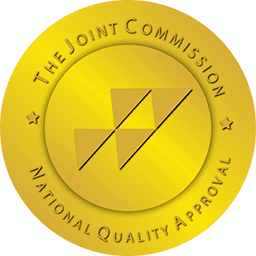
Walking out of a Christian rehab center is a moment that deserves to be honored. It marks the end of an intense, deeply personal chapter—one filled with spiritual renewal, honest self-reflection, and the painful work of letting go of addiction. But it’s not the end of the story. In fact, it’s often the beginning of another one. Healing doesn’t stop when the bags are packed and the program is over. Sometimes, the next step is just as important: taking time to focus fully on mental health before re-entering everyday life.
The Risk of Rushing Back to the Real World Too Soon
It’s easy to assume that after completing a faith-based rehab program, someone is ready to return home, jump back into routines, and move forward. But the truth is, the world outside doesn’t slow down just because you’ve been through something transformative. Bills still need to be paid. Family dynamics haven’t magically reset. Old triggers can pop up in unexpected places. And the brain, still working through patterns that feed addiction, can struggle to handle this flood of responsibility all at once.
Spiritual growth and sobriety are meaningful accomplishments, but they don’t automatically equal emotional stability. Rehab opens the door, but real life tests whether the foundation is strong enough to hold. That’s where ongoing care can make all the difference. A mental health facility offers a structured space to continue strengthening that foundation before the weight of the outside world presses down again.
The Intersection of Faith and Mental Clarity
Christian rehab centers do powerful work in reconnecting individuals with their faith and sense of purpose. But addiction often grows in soil that’s been depleted by trauma, depression, anxiety, or unresolved emotional pain. And those don’t always get fully addressed in the short window of a residential program.
Think of it this way: detox and rehab clear the fog, but that’s not the same as having a clear view of the road ahead. A mental health facility gives that clarity room to grow. Therapy dives deeper. Time slows down a little. Emotions are processed in real time, not just talked about. And faith isn’t set aside—it becomes part of the healing strategy. Putting faith and mental health together isn’t just possible—it’s powerful. Many programs are designed to support both spiritual and psychological health so that one doesn’t eclipse the other.
That combination is especially important for those who might struggle with dual diagnoses. It’s not uncommon for addiction to be tied up with mental health conditions like bipolar disorder, PTSD, or generalized anxiety disorder. These don’t vanish the moment someone puts down a substance. They require time, focus, and professional care to manage—and ideally in an environment that continues to support the spiritual framework that rehab helped build.
The Reality of Emotional Whiplash Post-Rehab
There’s a quiet sort of whiplash that happens when someone leaves a tightly structured rehab environment and returns to regular life. In treatment, the days are planned, support is constant, and temptation is removed from the equation. Suddenly, without those guardrails, it’s up to the individual to decide how to handle stress, doubt, loneliness, or confrontation. And it’s not always easy.
Even for the most faithful, doubt and discouragement can creep in. That’s normal. But it can also be dangerous if someone hasn’t yet developed the tools to deal with those emotional highs and lows. A secondary mental health program helps ease that transition. It serves as a bridge between the intense, focused environment of Christian rehab and the unpredictability of everyday life.
The truth is, addiction recovery is layered. Completing rehab addresses one part of the problem. Mental health support works on the other layers. Together, they offer a more complete kind of healing—one that lasts longer and holds stronger when real-world challenges show up at the door.
Why Mental Health Facilities Aren’t a Step Back—They’re a Step Forward

It’s easy to feel like going to a mental health facility right after Christian rehab might be a sign of failure. That couldn’t be further from the truth. In fact, it’s often the smartest, most self-respecting move someone can make. When people ignore their mental health, they don’t give themselves the best chance at long-term sobriety. They try to build a new life on an old foundation.
But after finishing treatment, going somewhere like Neurish Wellness of CA to focus on your mental health can change the game. These programs are designed for people who are serious about staying well—not just sober. They offer individual therapy, group work, medication management (when needed), and emotional stability in a way that complements the faith-based work already done in rehab.
This isn’t about “more rehab.” It’s about treating the whole person—mind, body, and spirit—and making sure the healing is as strong on the inside as it looks on the outside. A few more weeks or months of care can mean the difference between relapse and renewal.
Building a Life That Doesn’t Just Stay Sober, But Feels Worth Living
The goal isn’t just avoiding substances. It’s building a life that feels good enough you don’t want to escape it. Mental health care helps people do just that. It supports self-esteem, mends emotional wounds, and allows space for honest growth. And when that’s done in tandem with a person’s spiritual life, the result isn’t just recovery—it’s transformation.
For some, that transformation begins in a church. For others, it begins on a therapy couch. Ideally, it happens in both places. There’s no shame in needing more time, more support, or more healing. In fact, that’s often what separates those who stay sober from those who struggle to maintain it.
It’s not about being strong enough to go home right away. It’s about being wise enough to know when you still need support—and brave enough to ask for it.
What Comes After the Exit Door
Leaving Christian rehab isn’t the last step—it’s the first. Choosing to continue healing through mental health care is how that progress becomes part of daily life, not just something left behind in a treatment center. The truth is, when faith and therapy walk side by side, long-term recovery doesn’t just become possible—it becomes sustainable.
The end of rehab isn’t the end of the journey. It’s just the next beginning. And how someone chooses to handle that beginning can shape everything that comes after.












